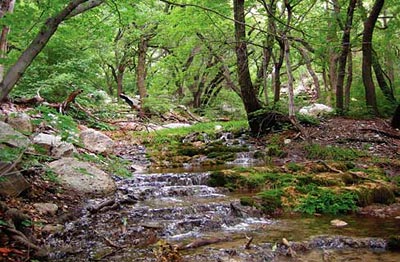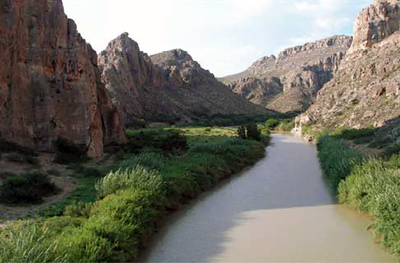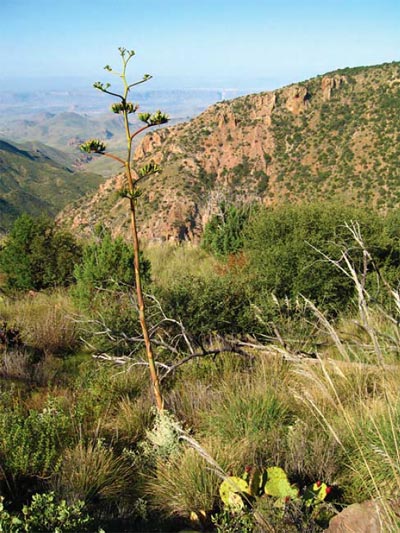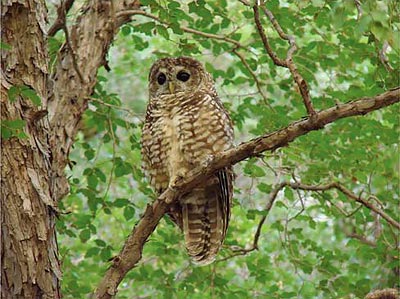The Chihuahuan Desert Network is currently developing protocols to monitor several vital signs that may reflect current and future impacts of climate change. This brief offers a summary of how Chihuahuan Desert Network monitoring will detect future change.
Introduction
The Chihuahuan Desert Network (CHDN) is one of 32 National Park Service inventory and monitoring networks implementing Vital Signs monitoring to assess the condition of park ecosystems and develop a strong scientific basis for stewardship and management of natural resources across the National Park System. The CHDN is currently developing protocols to monitor several vital signs that may reflect current and future impacts of climate change. This brief offers a summary of how CHDN monitoring will detect future change.

Photo by D. Bieri
Seeps and Springs
Water and water-dependent ecosystems are scarce resources in the arid southwest, and are generally regarded as biodiversity hotspots. Seeps and springs are critical surface water sources and are among the most restricted habitats for plant and animal species. Precipitation is critical to the existence of seeps and springs. The size, frequency, and duration of precipitation events are key factors influencing spring-water availability. Climate change is expected to alter surface water quantity, as well as seasonal patterns of flooding and drought, and springs will be a direct indicator of these changes. The CHDN will monitor discharge, water quality, macroinvertebrates, and vegetation at a subset ofsprings in the network.
Groundwater
In the Chihuahuan Desert. groundwater is the source of most surface water bodies. Availability of groundwater also has critical consequences for plants, animals, and nutrient, water, and energy flows. In many parts of the American Southwest, long-term drought and human development have already led to significant declines in groundwater levels at local and regional scales. Impacts to groundwater resources associated with reduced infiltration and storage, often related to soil loss and changes in surface characteristics, can be directly addressed by management actions aimed at soil conservation and recharge enhancement. The possibility of a reduction in precipitation recharge related to climate change, however, would be far more problematic and have the potential for broad-scale impacts to surface-water systems. The CHDN will monitor groundwater quantity in wells throughout the network.

Photo by R. Skiles
Rivers
Chihuahuan Desert Network parks contain 247 miles of the Rio Grande, as well as the confluence of the Devils, the Pecos, and the Rio Grande in Amistad National Recreation Area. The condition of these rivers within CHDN parks is greatly influenced by drivers and stressors occurring across the landscape in areas located well beyond park boundaries. Climate change may have direct and indirect effects on streamflow and water quality. As temperature and precipitation patterns affect the abundance, type, and distribution of vegetation cover in watersheds, changes in flood magnitude and duration, sediment loads, and water chemistry will likely occur. CHDN monitoring of water quality, channel morphology, macroinvertebrates, and stream discharge will allow park: managers to address proximate issues occurring within park boundaries and will also provide an index of overall watershed condition.

Photo by S. Cleason
Upland Vegetation and Soils
Desert ecosystems are sensitive indicators of climate change because small changes in temperature and precipitation can have significant effects on physical resources and biological communities. The Chihuahuan Desert is considered one of the most diverse deserts of the world, and a critical reservoir for conserving biodiversity. Changing patterns in precipitation and temperature have the potential to shift the latitudinal and elevational distribution of some plant communities and threaten the pemistence of others. Changes in climate, combined with anthropogenic effects such as nitrogen deposition may result in the establishment of new ecological processes that may be detrimental to native plant species. The CHDN upland monitoring is designed to ascertain broad-scale changes in vegetation and dynamic soils properties in the context of changes in other ecological drivers, stressors, and processes, including climate. Specifically, the network will monitor structure and composition of selected vegetation communities and biological soil crusts.
Invasive Exotic Plants
Climatic changes are predicted to provide exotic plant species with new opportunities for invasion. Because they fragment native ecosystems, displace native plants and animals, and alter ecosystem function, invasive exotics represent one of the most serious threats to natural ecosystem integrity. They can also alter fire regimes by causing fires to burn more swiftly or intensely, or even introducing fire to systems that did not evolve with it. Several climate models predict that climate change will result in more frequent and extreme droughts that could episodically reduce water availability and soil moisture. An increase in exotic invasions, in combination with the decreasing soil moisture that may accompany climate change, could set the stage for fires with the potential to dramatically impact desert and aquatic ecosystems. CHDN will be monitoring the distribution of invasive plants as part of monitoring for uplands and seeps and springs. CHDN will also implement a protocol to provide park managers with data on early detection of these species, which should allow them to deal with invasive exotic plants effectively in the face of climate change.

NPS
Landbirds
Birds can respond quickly to changes in resource conditions. Changes in landbird populations may indicate changes in the environment upon which they depend. Despite being relatively mobile, birds would likely be significantly affected by climate change, as many require existing high-elevation biomes for key portions of their life cycles and some are sensitive to temperature. For example, the Mexican spotted owl is intolerant of warm temperatures, and its distribution is already reduced. Bird monitoring data can be used to ascertain the overall condition of CHDN parks, and can provide insights into the potential consequences of stressors, such as climatic change.
Prepared by the Chihuahuan Desert Network I&M Program, 2011
Tags
- amistad national recreation area
- big bend national park
- carlsbad caverns national park
- fort davis national historic site
- guadalupe mountains national park
- rio grande wild & scenic river
- white sands national park
- swscience
- american southwest
- chihuahuan desert
- chdn
- climate change
- science
- monitoring
- springs
- groundwater
- rivers streams
- uplands
- invasive plants
- birds
- landbirds
- project
- climate change effects
Last updated: September 20, 2018
